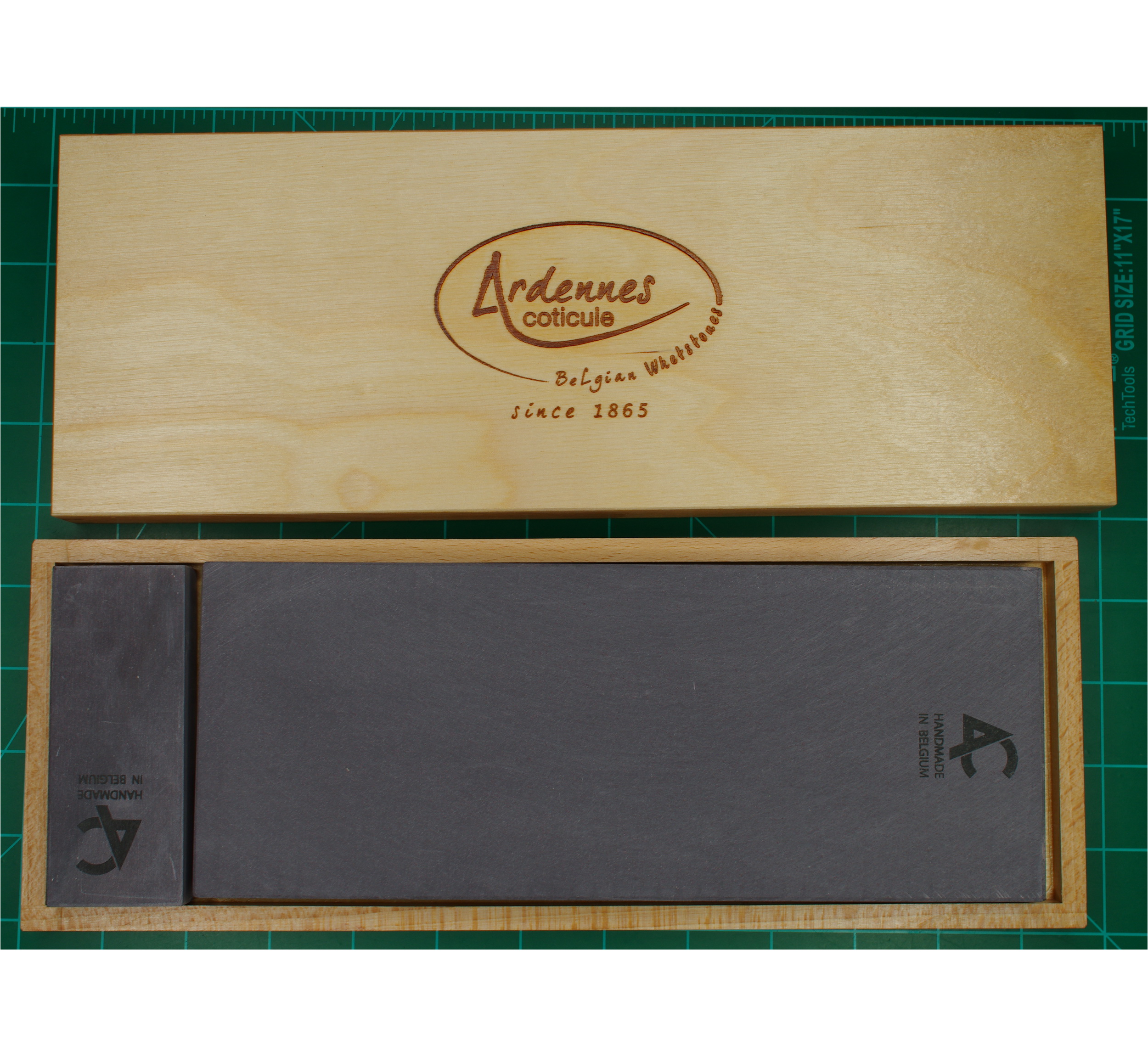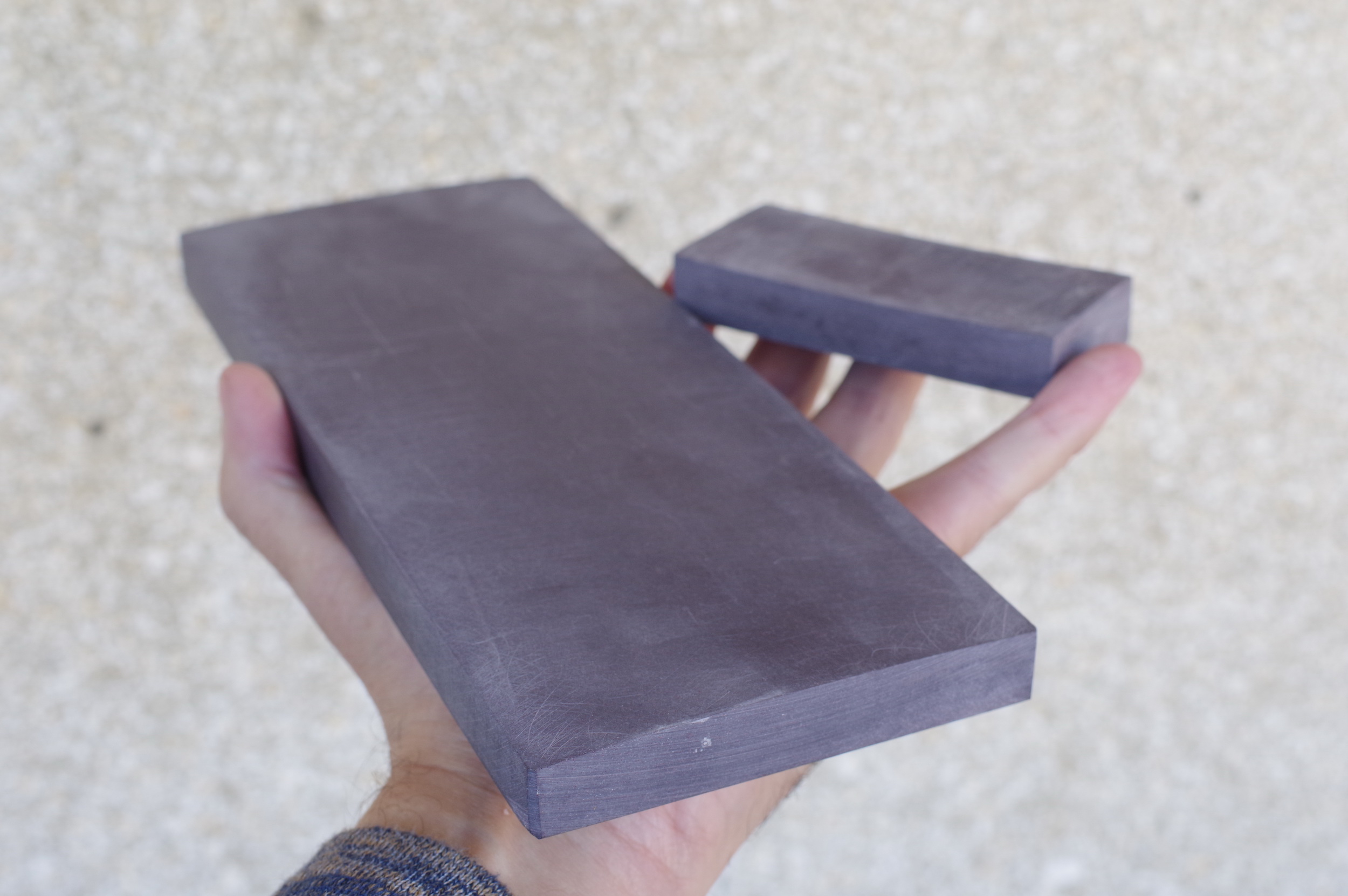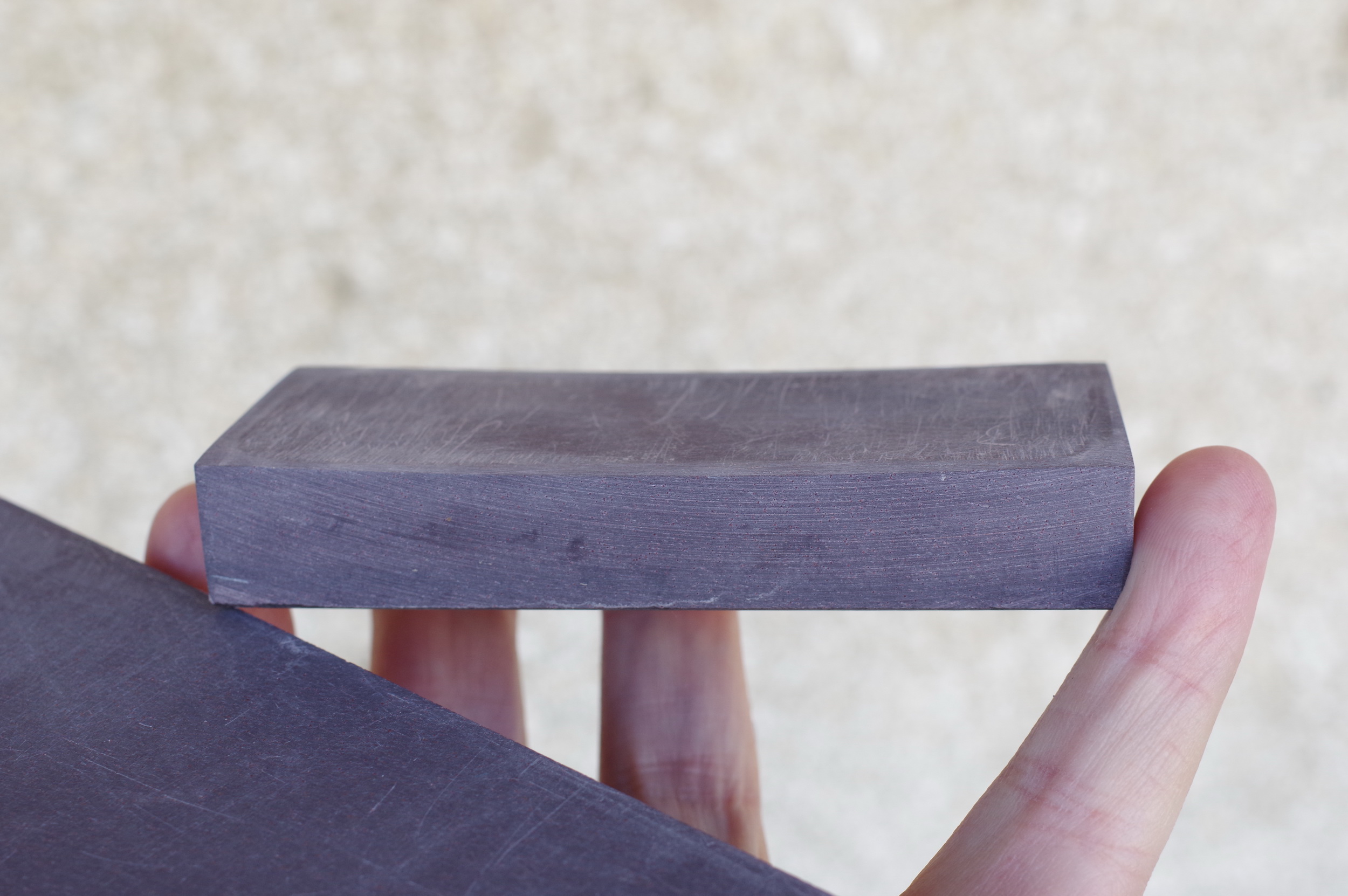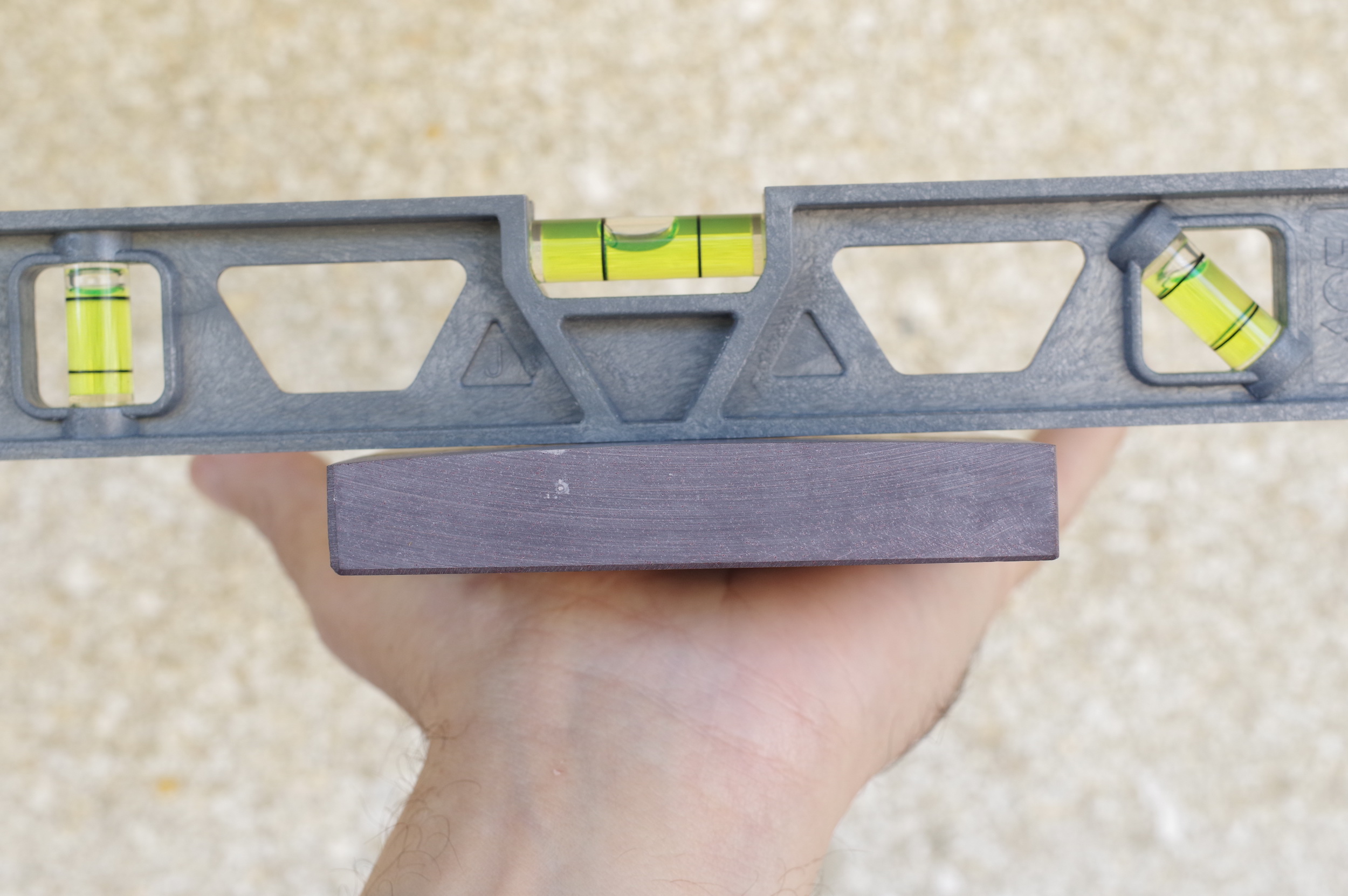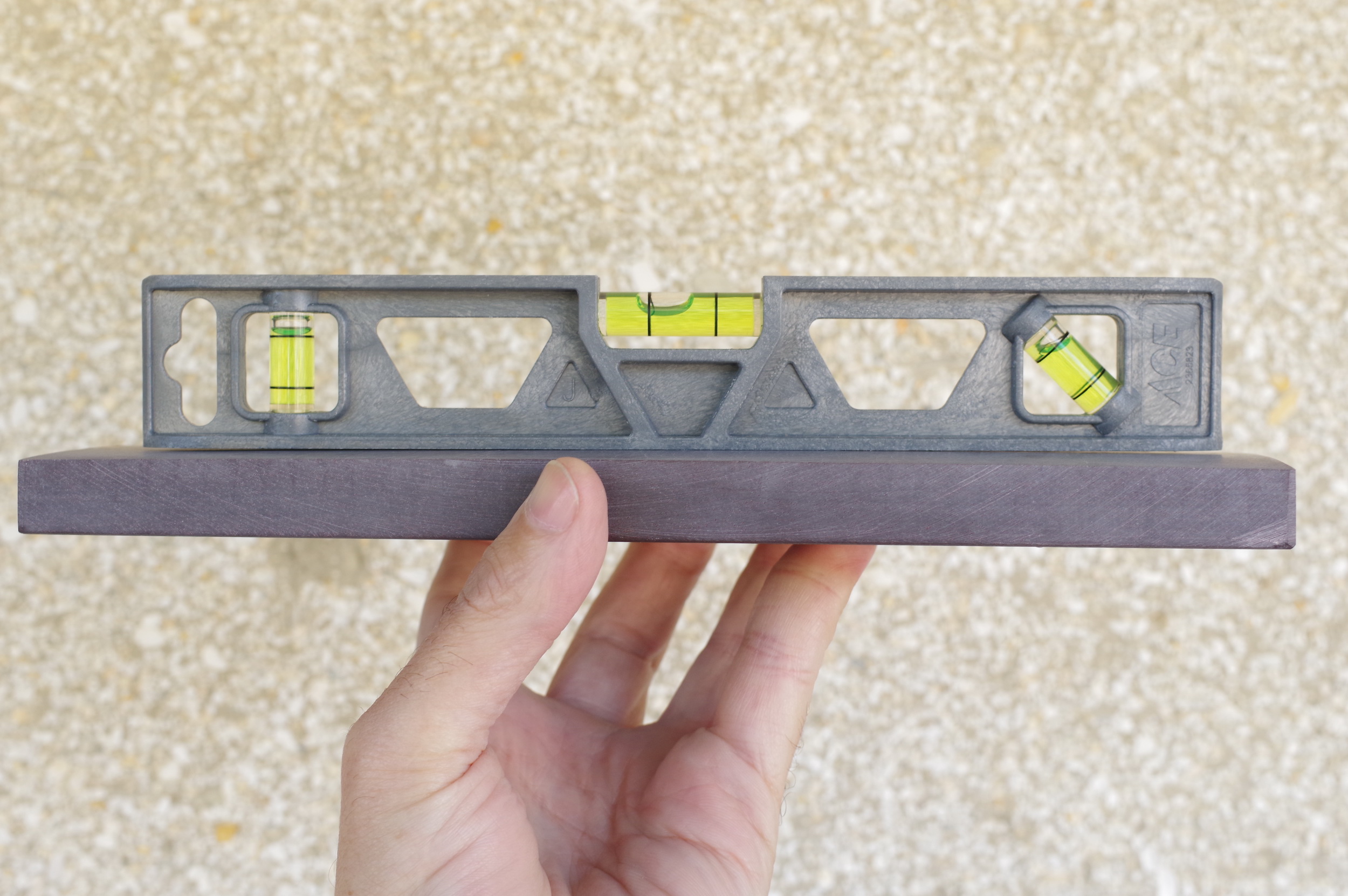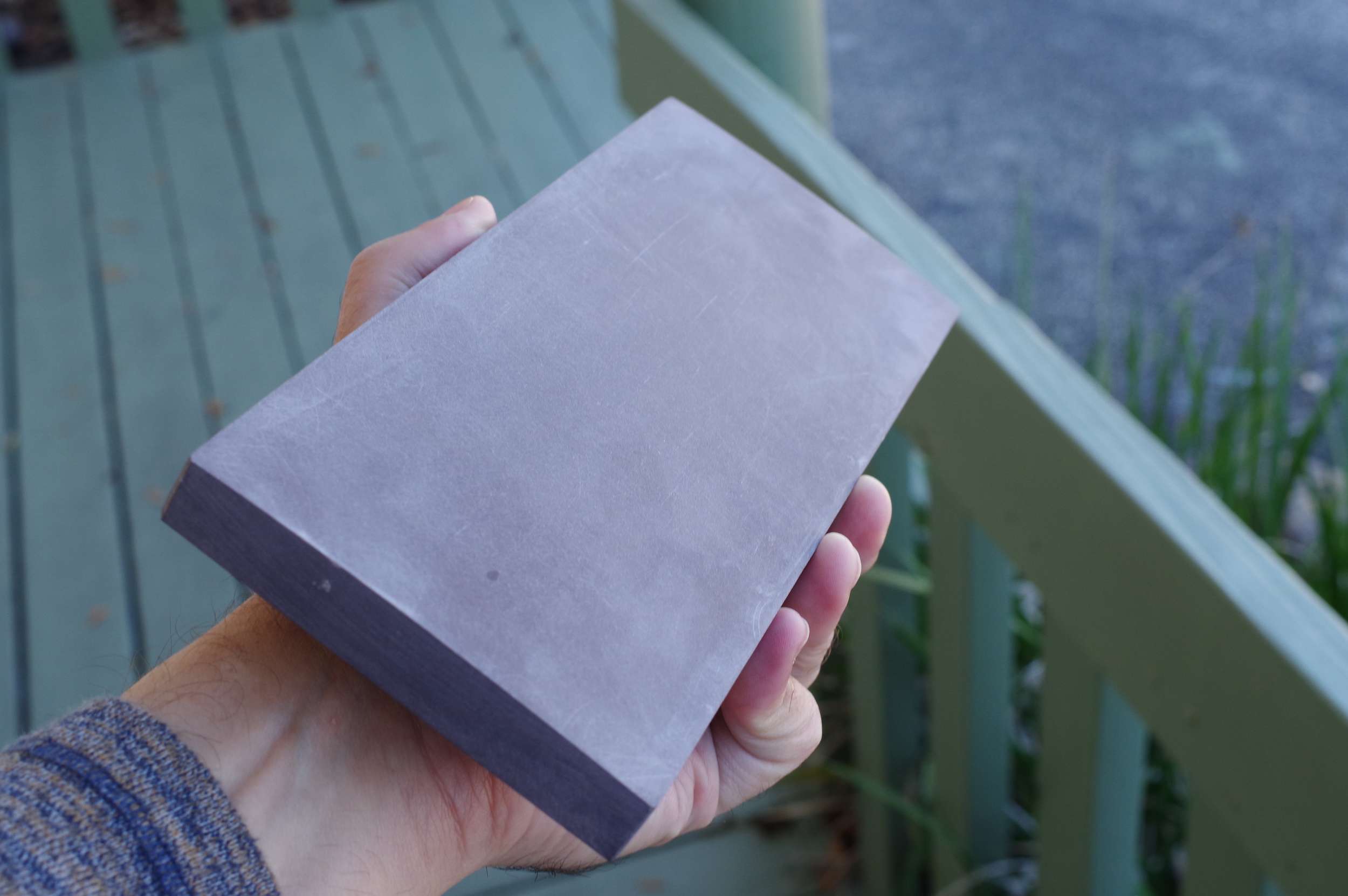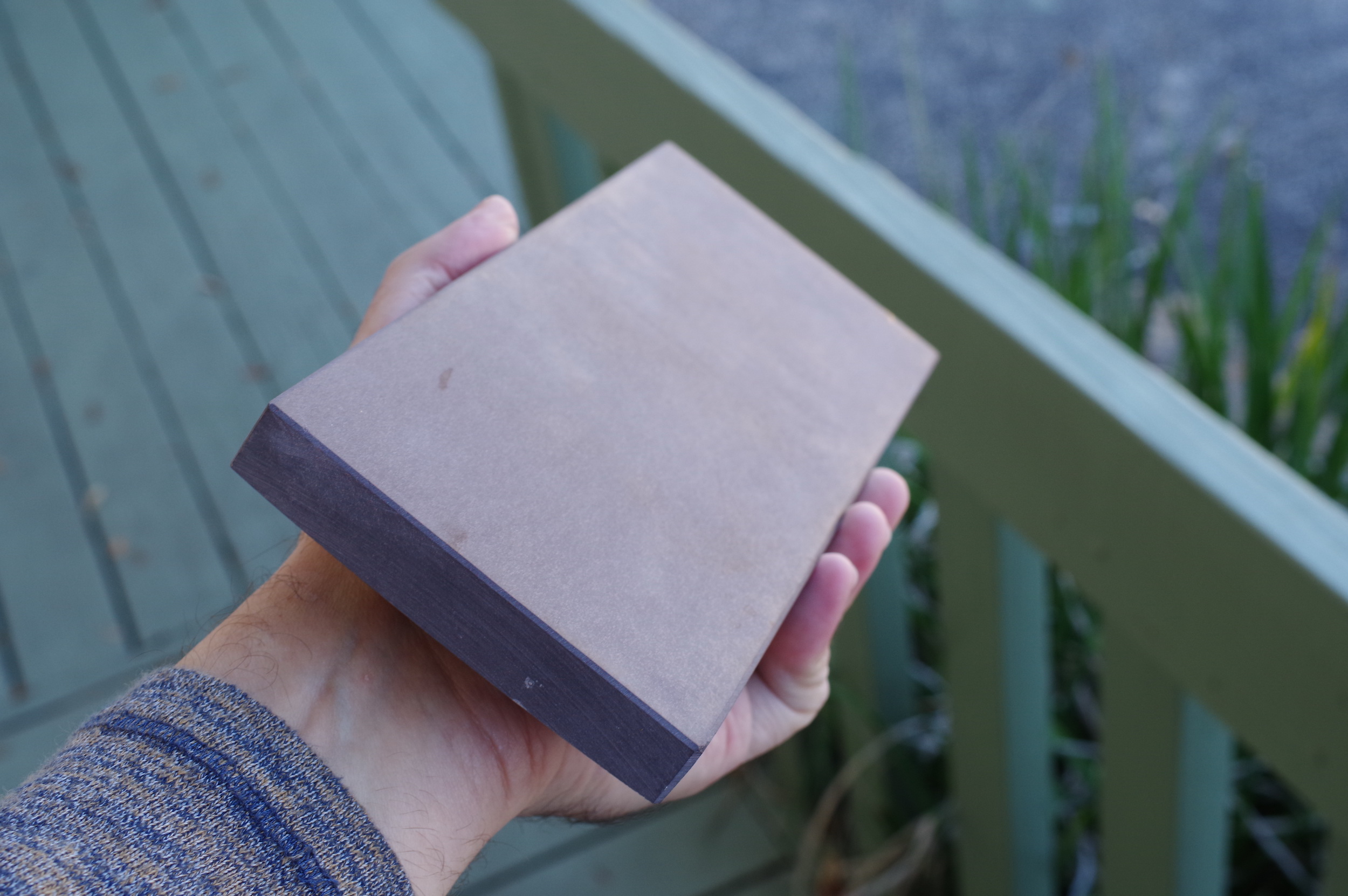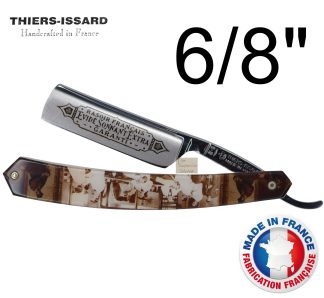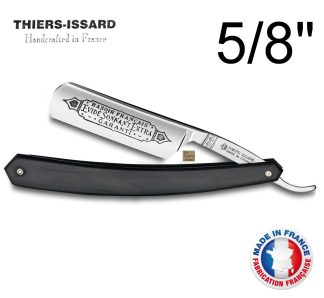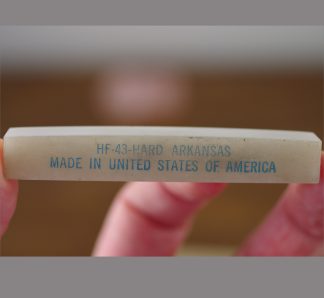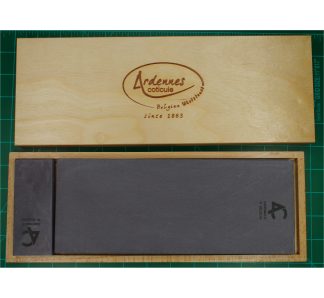Description
This listing’s for a ~10x4x0.6″ Belgian blue whetstone, with box and ~4×1.6×0.6″slurry stone”.
It makes a simply glorious natural whetstone for the kitchen that can also set up and refine a razor!
You can elect to purchase it cut and flattened just as the Belgians produced it on their grinding discs (shown in the first picture here), or intentionally shaped to be an elliptical convex form (shown in the successive images, and for which to produce the shapes I used this tool, and sandpaper), being a ~6.5’Ø shape across the 4″ axis and a ~25’Ø shape down the 10″ axis; this is a *remarkable* tool for your cutlery at home! In so doing, I removed ~3.3mm of the original stone’s ~16-17mm corners’ thickness, and put 1.75 hrs hard labor into shaping.
I also concave shaped the slurry stone to be the ‘anti’ shape to the bench stone, so that you can maintain the geometric form of your hone for years at home without having to buy that shaping plate. That’s what the German grinders all do from what I’ve seen, they like to hand-sculpt a gently-convex whetstone and then when they get it the way they like it they take sandpaper wrapped tight around the top of their finished bench stone and use that to concave a little rubbing stone.
With a shape of 4×10″ for the bench stone, face the 4″ axis of your stone for establishing a bevel on your knives, keeping the spine low so you carve in a bevel with good concavity upon it like if you had access to a very fine wheel. At some point, you switch the way you move on the bench stone so that you face down the 10″ axis, and this will immediately go toward the knife edge’s apex. When you get that apex the way you like, strop the knife or finish briefly on a hard rod and you’ll have a durable apex with a concave bevel-rear.

